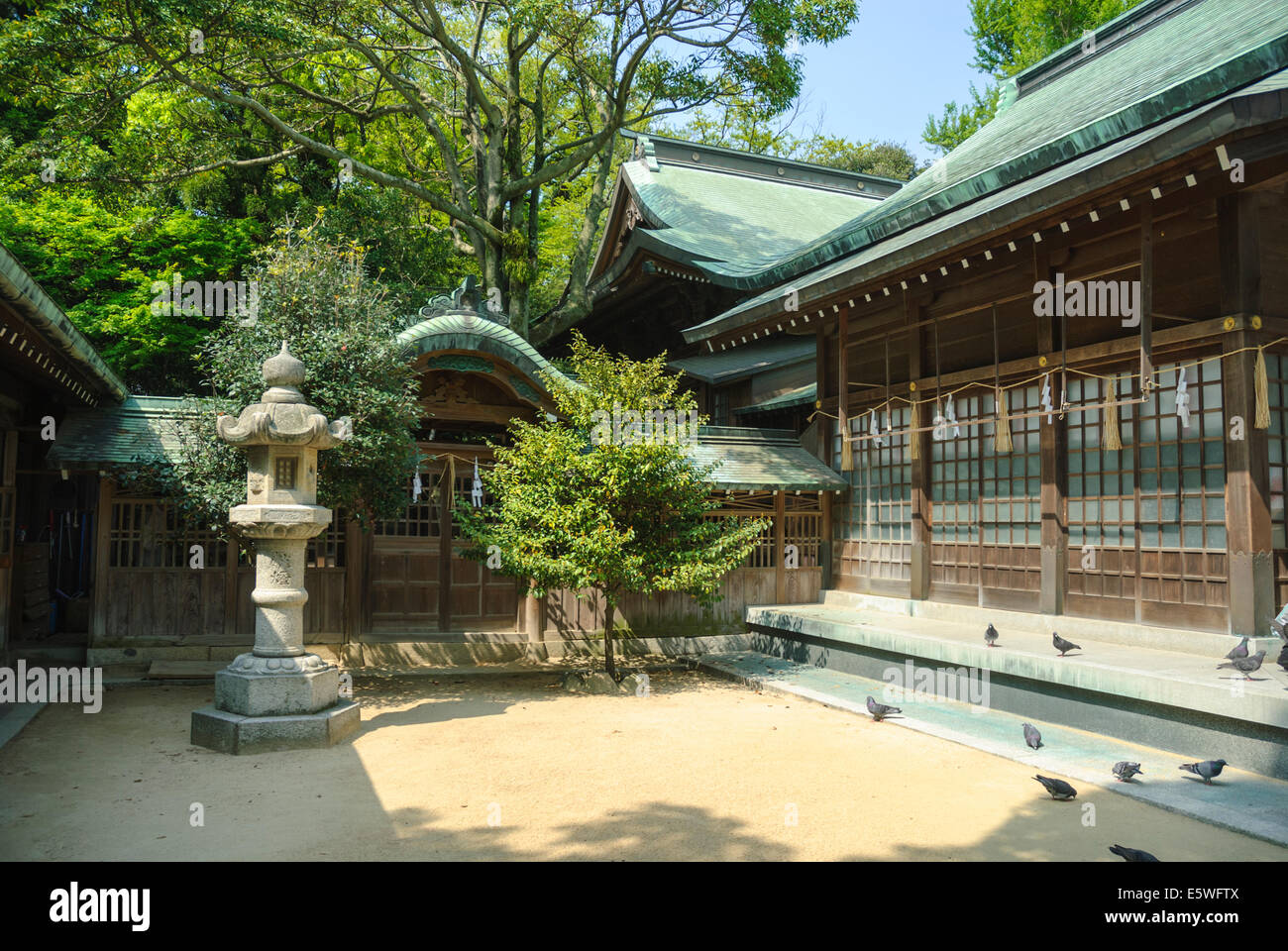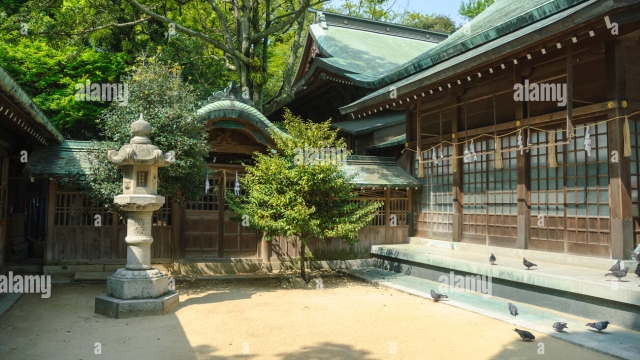
Nestled within the serene landscapes of Japan, shinto shrines stand as timeless gateways to a world where spirituality and nature intertwine. These sacred spaces, known as jinja, uphold the ancient beliefs of Shintoism, an indigenous faith that venerates kami, the spirits believed to inhabit natural elements such as mountains, rivers, and trees. Each shrine is a unique testament to the rich cultural heritage of Japan, inviting visitors to partake in a profound experience that transcends the ordinary.
As one wanders through the torii gates that mark the entrance to these hallowed sites, a sense of tranquility envelops the senses. The air is filled with the faint rustle of leaves and the distant sound of flowing water, creating an atmosphere that beckons reflection and reverence. Exploring the myriad of shinto shrines across the country reveals not only their architectural beauty but also the deep-rooted traditions and rituals that connect the past with the present. Each visit to these sacred spaces unveils whispers of the kami, echoing the harmony of existence, and igniting a sense of wonder in all who seek to understand the enigmatic beauty that lies within.
Historical Significance of Shinto Shrines
Shinto shrines in Japan hold profound historical significance, as they serve as vital links to the spiritual and cultural heritage of the nation. Established over a thousand years ago, these shrines reflect the country’s unique polytheistic belief system, which venerates kami, or divine spirits. Each shrine is dedicated to specific kami, who are believed to inhabit natural elements such as mountains, rivers, and trees, thus intertwining religion with the natural world. This relationship has shaped the identity and values of Japanese society throughout history.
The architectural styles of Shinto shrines also reveal their historical importance. The oldest shrines, like Ise Jingu, exemplify traditional techniques that celebrate simplicity and harmony with nature. The use of natural materials and the emphasis on minimalist design highlight the Japanese aesthetic and philosophy. Additionally, the often elaborate rituals and festivals associated with these shrines, many of which date back centuries, underscore their role in community cohesion and the preservation of cultural traditions.
Furthermore, Shinto shrines have played a significant role in Japan’s history, particularly during periods of political change and social upheaval. They have served as places of worship for both common people and nobility, influencing governance and societal norms. The Meiji Restoration in the late 19th century marked a pivotal moment, as Shinto was established as the state religion, which transformed shrines into symbols of national identity. This interplay between state and religion has shaped not only the shrines but also the broader narrative of Japan’s history.
Architectural Wonders of Shrine Design
Shinto shrines in Japan showcase a unique architectural style that reflects the spirituality and nature intertwined in Shinto beliefs. The designs often feature wooden structures with graceful lines that blend harmoniously with the surrounding environment. Many shrines are raised off the ground, resting on pillars that allow for natural airflow and emphasize the connection between the spiritual and the natural world. The use of natural materials, predominantly wood, creates a warm and inviting atmosphere, making each shrine a serene place of worship and reflection.
One of the most iconic features of Shinto shrines is the torii gate, which marks the entry point from the everyday world to the sacred realm of the kami. These gates are often painted in vivid vermilion, symbolizing purity and protection. The architectural arrangement, including the layout of the shrine buildings and the torii gates, is carefully aligned with traditional geomantic principles. This establishes a rhythmic flow that guides visitors through a journey of spirituality, allowing them to interact more meaningfully with their surroundings.
Another remarkable aspect of shrine architecture is the attention to seasonal changes and rituals. Many shrines incorporate elements that reflect changes in nature throughout the year, such as cherry blossoms in spring or vibrant foliage in autumn. Additionally, specific structures may be dedicated to annual festivals, each showcasing elaborate decorations and special designs that enhance the shrine’s beauty during these events. This dynamic relationship between the shrines and nature further enhances the allure of Shinto shrines in Japan, inviting visitors to experience the ever-changing splendor of their environment.
Cultural Practices and Rituals
At the heart of Shinto shrines in Japan lies a rich tapestry of cultural practices and rituals that connect the spiritual and the everyday. Each shrine serves as a sacred space where devotees come to pay respect to the kami, or spirits, associated with nature, ancestors, and specific places. Visitors often begin their experience with a purification ritual at the temizuya, a basin where they cleanse their hands and mouth, symbolizing the removal of impurities before approaching the divine.
Festivals, known as matsuri, are vital to the life of Shinto shrines, celebrating seasonal changes and honoring kami through various performances, dances, and offerings. These vibrant events bring communities together, featuring traditional music, colorful floats, and rituals that have been passed down through generations. Participation in these festivals fosters a sense of belonging and reinforces communal ties, while also providing an opportunity to express gratitude for the blessings received throughout the year.
神社めぐり
Another essential aspect of worship at Shinto shrines is the practice of making offerings and prayers. Visitors often write their wishes or concerns on ema, wooden plaques, which are then hung in designated areas, allowing the kami to receive these messages. The act of throwing coins into the offering box and ringing the bell at the shrine signifies an invocation of the kami’s attention. These daily practices not only reflect personal devotion but also serve as an expression of hope, gratitude, and reflection on the beauty of life itself.
The Spiritual Essence of Landscape
The relationship between Shinto shrines and their natural surroundings is deeply rooted in the belief that kami, or spirits, inhabit the landscape itself. Mountains, rivers, trees, and rocks are all considered sacred elements, each embodying a unique spiritual significance. When visiting a Shinto shrine, one is often struck by how seamlessly these places of worship integrate with the natural world, creating a tranquil environment that fosters a strong connection to the divine.
The carefully curated landscapes around Shinto shrines often reflect the principles of harmony and balance. Pathways meander through lush trees, leading worshippers and visitors alike to the shrine’s main hall. These journeys are both physical and spiritual, allowing individuals to engage in quiet contemplation and reflection. The serene environment encourages a sense of reverence, reminding us of the presence of kami that pervade the world around us.
In this sacred space, the seasons are celebrated through vibrant festivals that highlight the changing beauty of nature. Cherry blossoms in spring, lush greenery in summer, vibrant leaves in autumn, and the stark beauty of winter all contribute to the shrine’s allure. This cyclical transformation emphasizes the transient nature of life, a theme intrinsic to Shinto beliefs. By embracing the spiritual essence of the landscape, Shinto shrines in Japan remain a testament to the interconnectedness of humanity and nature.



